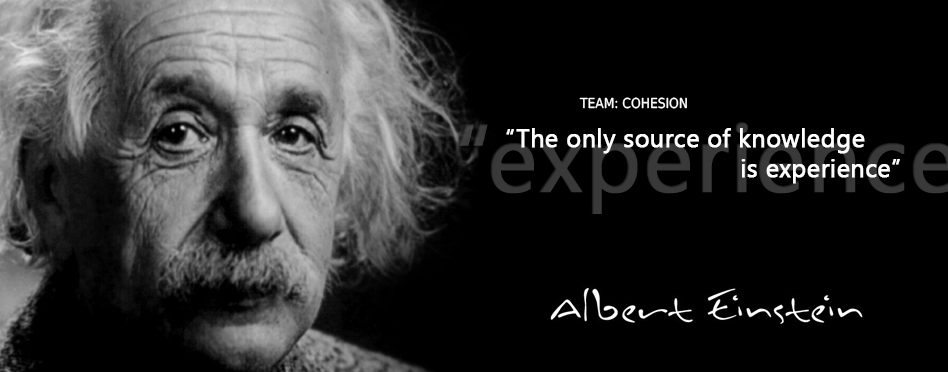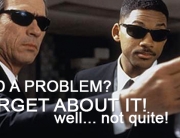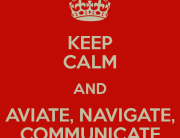The cockpit came to a standstill for a few moments. As the sound of the engine spooling down subsided, only the faint scratching of my pen racing along the empty lines of the daily flight documents could be heard. Another successful flight! Well, not quite…
Breaking the short silence, my captain’s voice almost startles me more than his frantic announcement: “We have a FIRE!” (Bear in mind this is paraphrased to save your eyes from the more… colorful wording actually used). I look up to the engine cowling of our PC12, but nothing seems out of the ordinary there. Where’s the fire? As shift my eyes to the exhaust pipe on my side of the nose, my gaze is greeted by several feet long flames streaming out, bright and furious. All of the sudden, both of us go from standstill to full speed, and in a split second we are both engaged in a battle against time, trying to work as a coherent team to vanquish this fire-breathing dragon that our airplane had just turned into.
Although we achieved our goal of safely containing the exhaust flames and cooling down the engine, this event led to what was for me a defining landmark in my aviation career. The ensuing investigation into what could have been, I will admit, a much better managed incident, taught me that no matter how seasoned a pilot, there is always need to constantly strive to learn, improve, challenge and better one-self both skill-wise and knowledge-wise. The learning process will teach you more about yourself than you ever imagined, and allow you to become an inherent part of your team’s success.
After 8 hours of uneventful flying, completing multi-legs missions in clear-sky weather, the job can hardly be called stressful. Yet when the flames start to stream out barely a foot from you, as long as your leg, suddenly your day just took a pretty stressful turn. So how do lead and manage your team in order to achieve success, despite unforeseen and sometimes highly demanding and stressful events?
Technical training will provide you with the basic tools and understanding to manage the airplane. But to lead your team, you need to play its strengths and be extremely knowledgeable of the weaknesses. Interpersonal team cohesion will then become second nature to a well-executed operational performance.
When the investigation of our incident was completed, here was the final verdict: Although the situation ended up being contained and managed to a safe end, the crew’s coordination and cohesion was questioned. Although we both had the same goal, we failed in some respect to work properly together and achieve it in a much more effective way because of miscommunications and divergent priorities. Was it the stress? Was it the lack of skill or training? Or was it that we had not clearly set targets as a crew, even from the beginning of the day?
STRESS
It has been argued that “stress” is a cognitive process: for a situation to be deemed stressful, it has to be mentally appraised as such. Therefore, the appraisal process becomes crucial to understanding and responding to a stressful event. Understand how your brain works and interacts with a situation, and you will be much better equipped to manage any amount of stress.
Primary Appraisal:
It is important to understand that both personal (remember the whole PRE-FLIGHT section?) and environmental/circumstantial factors (time constraints, skill level required, etc.) both influence the “primary appraisal”, which in turns affects the different potential solutions. In short, this “first impression” of the situation will tell you how “stressful” the problem is, and how to prioritize and allocate resources to fix it.
Let’s go back to the original story behind this article for an example of this.
As the crew went from a no-stress to a high-stress situation, both naturally started evaluating the circumstances to determine the “stress level”. A visible fire and immediate danger to the airplane as well as the line personnel outside the aircraft dictated a rapid response and full commitment from both crews. However, there were more than one solution to the problem: Deal with the fire from within and use cockpit resources (checklist, system knowledge, etc.) to contain the fire, or evacuate the aircraft to secure personnel outside? It is important to realize that experience and training will both play a crucial role in this.
In our case, the crew decided to contain the fire from within. After appraising the situation (engine temperature spike, visible flames, and personnel at risk outside but not inside) my brain needed to select priorities and act accordingly to achieve our safety targets:
– Focus the attention on managing the problem itself: Running checklists and completing necessary steps to diffuse the potential danger of the situation, removing the fire threat; or
– Focus my attention on deciphering the emotional components (fear, confusion, survival instinct) to ensure proper communication between the flight crew and cabin crew as well as prevent panic – which would most likely produce injuries if somebody attempted to act on their own out of fear. Emotions – meaning “Energy in Motion” – can have a serious impact on the outcome of a situation. Having the ability to direct their “energy” the right way is a crucial skill set every team member must master.
More often than not, in high-stress situations, our brains will need to perform BOTH processes at the same time to provide the fastest and safest outcome possible. Focusing on ONLY the problem can create tunnel vision and cause the crew to overlook the need for proper communication with other parties or even secondary problems. But only focusing on the negative emotions and dealing with people instead of the problem can cause aggravation of the original situation, increasing the stress level exponentially – especially if proper communication has failed in the meantime and fear or panic starts taking hold.
Secondary appraisal
As your brain starts appraising the situation and the stress (danger potential or priority level) it will also create an inventory of the things you need, have or lack to respond properly to it: Time? Skill level? Experience? Man power? This is referred to as the “Secondary Appraisal”. The name may be misleading, as the brain does not do the Primary THEN the Secondary, but rather constantly underline the cognitive process of the former with the later. Always re-evaluating the available resources, the brain alters the primary appraisal to readjust priorities, juggling problem and emotions to achieve the balance required to deal properly with an ever evolving scenario. In short, as the secondary appraisal determines whether resources become more or less available, the brain basically dials the perceived stress level down or up accordingly through primary appraisal.
Adapt
High stress and skill-demanding professions mean problem solving and conflict resolution are a daily part of our jobs. The ability to cognitively assess a situation correctly is crucial and training plays a huge part in this. But the ability to adapt to a changing situation can be harder to achieve. Adapting to change in people is even more demanding. Where team work is involved, changing the team members often can create the biggest challenge in the ability and effectiveness of dealing with stressful situations.
You’ve probably heard of that principle many times in the course of your career or training: Problem and Conflict Resolution. Without going into details, the resolution means that the threat is gone and/or the target has been achieved. But resolution requires the individual/team to examine the effectiveness of the problem solving or stress coping; if it is not having the desired effect, a different strategy will need to be implemented.
A flexible mind and adaptable personality are key tools to any individual or team.
Examine the Situation. Understand the needs and constraints. Manage (and if need be, change) your priorities. Review the situation – if it is not resolved, adapt your approach to create a more efficient response to the threat.
* (Lazarus, R.S. (1966). Psychological Stress and the Coping Process. New York: McGraw-Hill.)
* (http://en.wikipedia.org/wiki/Stress_%28biology%29#cite_note-30)
TOOLS OF THE TRADE: EXPERIENCE, SKILLS AND TRAINING
You have probably heard the story of the successful businessman who, during an interview, was asked the secret to his success:
His reply is short but revealing: “Good decisions” he says, without hesitation.
The interviewer, not skipping a beat, then asks: – “How did you learn to make ‘Good decisions’? “
Again, the man’s answer is short but crucial: “Bad Decisions”.
As Oscar Wilde stated: “Experience is simply the name we give our mistakes”. These few words illustrate a fundamental truth: No matter how much knowledge you acquire through training, successful critical thinking is a combination of training and experience. An experienced team can has intuition, better understanding of the mechanics – both human and technical – and can adapt much easier. In the face of threat, experience provides a much broader ability to react swiftly and attain safety quickly. Experience also provides a much finer filter for possible errors, eliminating threats even before they become a potential danger.
Training
I’ve already talked in lengths about training in the Preflight: Team Work chapter. The basic thing to remember is this: “We do not rise to the level of our expectations. We fall to the level of our training” (Unknown source).
Training is the first line of defense against potentials errors and eventual threats which may arise. We train to perform to certain standards, but we also train to respond to certain events. Checklists, manuals, drills, they all mold our minds and condition us to a basic, standard skill level. In the case of training, however, testing standards do not provide any true demonstration of one’s ability to handle stress in the face of threat, but rather the ability to play a pre-determined script at a pre-required skill level. It is up to the airline/employer to enhance the training with interpersonal and leadership development.
Training is essential and does provide the foundation needed to build skills and experience upon. But training alone does not provide the tools for successful threat and error management in the work environment – rather it allows one to basically function as part of a team in a supporting function. Many accidents have happened where crew members were later proved to have received the required training, but eventually had lacked the proper experience to handle the threat they had faced. So if Training does not answer the need for proficient operations and threat management, what comes next?
Skill
Skill level is a factor of training quality. To achieve team cohesion in a high-skill, high-stress job, the leader/manager must ensure his team members demonstrate and maintain the required level of standards they honed during training. Only once every team member has demonstrated satisfactory skill level can desired safety and performance be expected.
Skill development however does not stop at training standards. An individual or team should always strive to enhance their performance by acquiring new skills, and constantly train to better their skill level. This being said, it’s hard to do so without a supporting structure or system within the company itself, and so it befalls the leaders to set the proper vision and pace – allowing their team room to grow and learn.
Experience
Whether you are a student pilot or a seasoned commercial pilot, you will by now have made a lot of decisions. Decisions is what defines our world. Decisions is what we get paid for. Any high-stress job is based on decision making – that’s why it is so stressful. Our brain is constantly reviewing information, analyzing, turning images upside down and trying to discover the hidden angle.
Albert Einstein once said: “The only source of knowledge is Experience”. The cognitive process of analyzing, storing and then retrieving past events and outcomes to help with a current problem is what we call experience. Whether you are conscious of it or not, your past experience always affects your reasoning on new problems. You learn what worked well, what required lots of work. The failures, the successes, all turning points in your personal growth, affecting your team’s performance directly.
Experience comes with benefits… and pitfalls. One of the benefits is the proportionate reduction of stress when facing various threats. Although not all events are the same, many bear similarities. An experience team member is able to gleam from past problems and resolutions to put together an answer for a specific occurrence. By extrapolating the results of past outcomes and resources requirements, the brain’s cognitive process recognizes a pattern and reduces the level of stress through familiarity. An emergency or non-standard event may seem very stressful the first time, but the second or third time it becomes easier and easier to resolve the situation and it appears much less dire than the first impression.
However, experience can become over time conducive to complacency. The false feeling of security and the reduced attention to details reopens the door wide open to operational errors, which in turn can pose additional internal threats to the safety or positive conclusion of a targeted goal.
An experienced team or individual can now start to shift their focus from threat resolution to threat avoidance. Experience, along with high skill levels, allows for a low cognitive demand during regular operations, even for seemingly “stressful” executions (take off, landing, etc.) A complacent team will settle down in a routine and keep their focus on “the big picture”. Complacency must be broken to allow the focus to shift from big to small, now bringing the team’s attention to the little details surrounding the operations.
Remember: Excellence is not a skill. It is an attitude. (Ralph Marston) To achieve excellence in performance and safety, the mold of routine must be broken. No – I am not crazy. Routine is good, but complacency prevents creativity and innovation. Complacency enables errors to creep in, and stops a “good” team from being “amazing”.
SET YOUR EXPECTATIONS
Once you have experienced individuals, teach them to break the mold and always think critically, creatively, outside the box of routine. When they have achieved their goals, they will then push on to achieve excellence.
As the team Leader, it is primordial for you to set the tone from the first encounter with your team members at the beginning of a work day or session. Lay out your vision of the day in a concise way, what you expect to achieve, and make sure everybody is clear on their roles and responsibilities. When a problem arises, the chain of command then is there to help but less crucial as team members can start taking initiative within their own roles and work together towards a resolution rather than always turn to the leader.
As a team Manager, it is your job to always set a clear standard of skill requirement and operational standards. These requirements may vary from day to day depending on external circumstances, becoming more or less demanding depending on the expected “stress” level that will be imposed, but always set to at least a safe, quantifiable level – S.O.P.s (Standard Operational Procedures) and C.O.M.s (Company Operations Manual) being the very basic minimum requirements.
With clear standards and expectations set, the team becomes a lot more efficient at reaching safety targets and operational goal. Less supervision is required, leaving more time and resources to deal with the smaller details, client needs or operational changes that may arise during the day. Communication becomes clearer with less information needing to be exchanged, reducing the risk for error. Threats are more easily assessed based on a well-defined set of rules, eventually leading to the goal of all and every professional team: a seamless operation, always working to achieve safety, always striving to attain excellence. Remove the mold, and open the door to innovation.





























[…] 2) In-Flight -TEAM Awareness (situational awareness; identifying threats and errors) -TEAM Management (leadership models & styles; managing threats and errors during flight) -TEAM Cohesion (Using all the available resources and personnel to ensure safety and success) […]
Thank you Eric for your kind comment and your savvy input!
I agree with your points – a lot remains questionable in hindsight of many different stories, incidents or accidents: was it truly skill, luck, experience… training? We need to better understand ourselves in order to better perform under duress.
Thanks again for your comment 🙂
[…] 2) In-Flight -TEAM Awareness (situational awareness; identifying threats and errors) -TEAM Management (leadership models & styles; managing threats and errors during flight) -TEAM Cohesion (Using all the available resources and personnel to ensure safety and success) […]
Thank you Eric for your kind comment and your savvy input!
I agree with your points – a lot remains questionable in hindsight of many different stories, incidents or accidents: was it truly skill, luck, experience… training? We need to better understand ourselves in order to better perform under duress.
Thanks again for your comment 🙂
Wow, JD, there’s so much here I don’t know where to begin!
I, and I’m sure any pilot, am always asking myself that Q: how well would I do in an emergency? While all those factors you mention play into the answer, the bottom line is we’re all human, and most likely we will fall into the “mediocre” area that you feel you did. Why? Well, again, because of all the factors you mentioned. The brain is constantly evaluating and re-evaluating the threat, and that itself can be a distraction from running the checklist and/or “Doing the right thing.”
While the “Miracle on the Hudson” is lauded as an amazing aeronautical feat, and Cap’n Sully lauded as a national hero, the reality of the situation painted a slightly different picture. Now, you can’t argue with “success,” but to this day there are many unanswered questions about that incident–chief among them, could they have made it to a dry land runway, if they’d only thought to jam the power levers immediately to TOGA? And, could/should they have seen and avoided the flock of birds in the first place?
Again, I don’t want to tarnish anyone’s reverence of the “Miracle,” but I do posit that, in that situation, being human, faced with a huge, immediate threat, and scant time to react, our heroes did what we all do–“not rise to the level of our expectations, but fall to the level of our training”
Bottom line: their training saved the day.
Fantastic post! It ties very much into one I am posting on 1/2/14…
Wow, JD, there’s so much here I don’t know where to begin!
I, and I’m sure any pilot, am always asking myself that Q: how well would I do in an emergency? While all those factors you mention play into the answer, the bottom line is we’re all human, and most likely we will fall into the “mediocre” area that you feel you did. Why? Well, again, because of all the factors you mentioned. The brain is constantly evaluating and re-evaluating the threat, and that itself can be a distraction from running the checklist and/or “Doing the right thing.”
While the “Miracle on the Hudson” is lauded as an amazing aeronautical feat, and Cap’n Sully lauded as a national hero, the reality of the situation painted a slightly different picture. Now, you can’t argue with “success,” but to this day there are many unanswered questions about that incident–chief among them, could they have made it to a dry land runway, if they’d only thought to jam the power levers immediately to TOGA? And, could/should they have seen and avoided the flock of birds in the first place?
Again, I don’t want to tarnish anyone’s reverence of the “Miracle,” but I do posit that, in that situation, being human, faced with a huge, immediate threat, and scant time to react, our heroes did what we all do–“not rise to the level of our expectations, but fall to the level of our training”
Bottom line: their training saved the day.
Fantastic post! It ties very much into one I am posting on 1/2/14…
[…] that require debriefing usually contain a certain element of stress. As we just discussed in the TEAM Cohesion chapter, stress is often synonym to emotions as part of the decision making cognitive process. […]
[…] that require debriefing usually contain a certain element of stress. As we just discussed in the TEAM Cohesion chapter, stress is often synonym to emotions as part of the decision making cognitive process. […]
[…] your team (Leadership, Cohesion, […]
[…] your team (Leadership, Cohesion, […]